
Welcome to Hyperion Records, a British classical label devoted to presenting high-quality recordings of music of all styles and from all periods from the twelfth century to the twenty-first.
Hyperion offers both CDs, and downloads in a number of formats. The site is also available in several languages.
Please use the dropdown buttons to set your preferred options, or use the checkbox to accept the defaults.

from notes by Angela Hewitt © 1997
extrait des notes rédigées par Angela Hewitt © 1997
Français: Hypérion
aus dem Begleittext von Angela Hewitt © 1997
Deutsch: Manuela Hübner
 Bach: Angela Hewitt plays Bach (2026 collection) Bach: Angela Hewitt plays Bach (2026 collection) |
 Bach: Angela Hewitt plays Bach Bach: Angela Hewitt plays BachAngela Hewitt’s acclaimed recordings of Bach on the piano have received the highest critical acclaim and found their way into thousands of homes, selling nearly 400,000 copies since her recording of the Inventions burst onto the scene in 1994. Now ...» More |
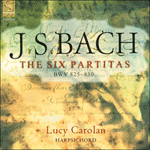 Bach: The Six Partitas Bach: The Six PartitasThis is a double release of the six partitas for harpsichord by J.S.Bach BWV 825-830 (1726 to 1731). These works offer a variety in intellectual depth and technical difficulty—all of which is heard to great effect at the hands of Lucy Caro ...» More |
 Bach: The Six Partitas Bach: The Six PartitasA wonderful new recording of what Bach designated his ‘Opus 1’. Angela Hewitt describes a lifetime of living with Bach’s music as ‘a great gift and a lifelong adventure’; we are fortunate to have such an authoritative companion and guide to that a ...» More |
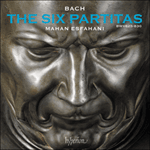 Bach: The Six Partitas Bach: The Six Partitas‘A comprehensive overview of every style available to Bach, from the archaic to the modern’: Mahan Esfahani rises confidently to the challenge of his own brilliant appraisal of the Partitas in performances brimming with intellectual and emotional ...» More |
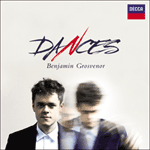 Dances DancesFor this second solo disc for Decca, Benjamin Grosvenor presents a recording of music influenced by dance forms. Historically and stylistically varied, the programme features both familiar and more obscure gems from the piano repertoire.» More |
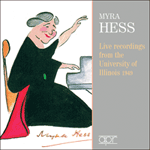 Myra Hess - Live recordings from the University of Illinois, 1949 Myra Hess - Live recordings from the University of Illinois, 1949Two complete recitals recorded at Illinois University on 17 and 18 March 1949 and some bonus recordings originally broadcast on 7 March 1937. Almost all the works included in this programme are new additions to the Myra Hess discography.» More |
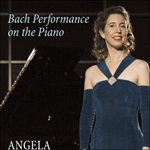 Angela Hewitt - Bach Performance on the Piano Angela Hewitt - Bach Performance on the PianoAngela Hewitt shares the inspiration and experience behind her award-winning playing in an illustrated lecture that explains the technical and practical steps essential for performing Bach on the piano. Angela Hewitt is a phenomenal artist who has es ...» More |

